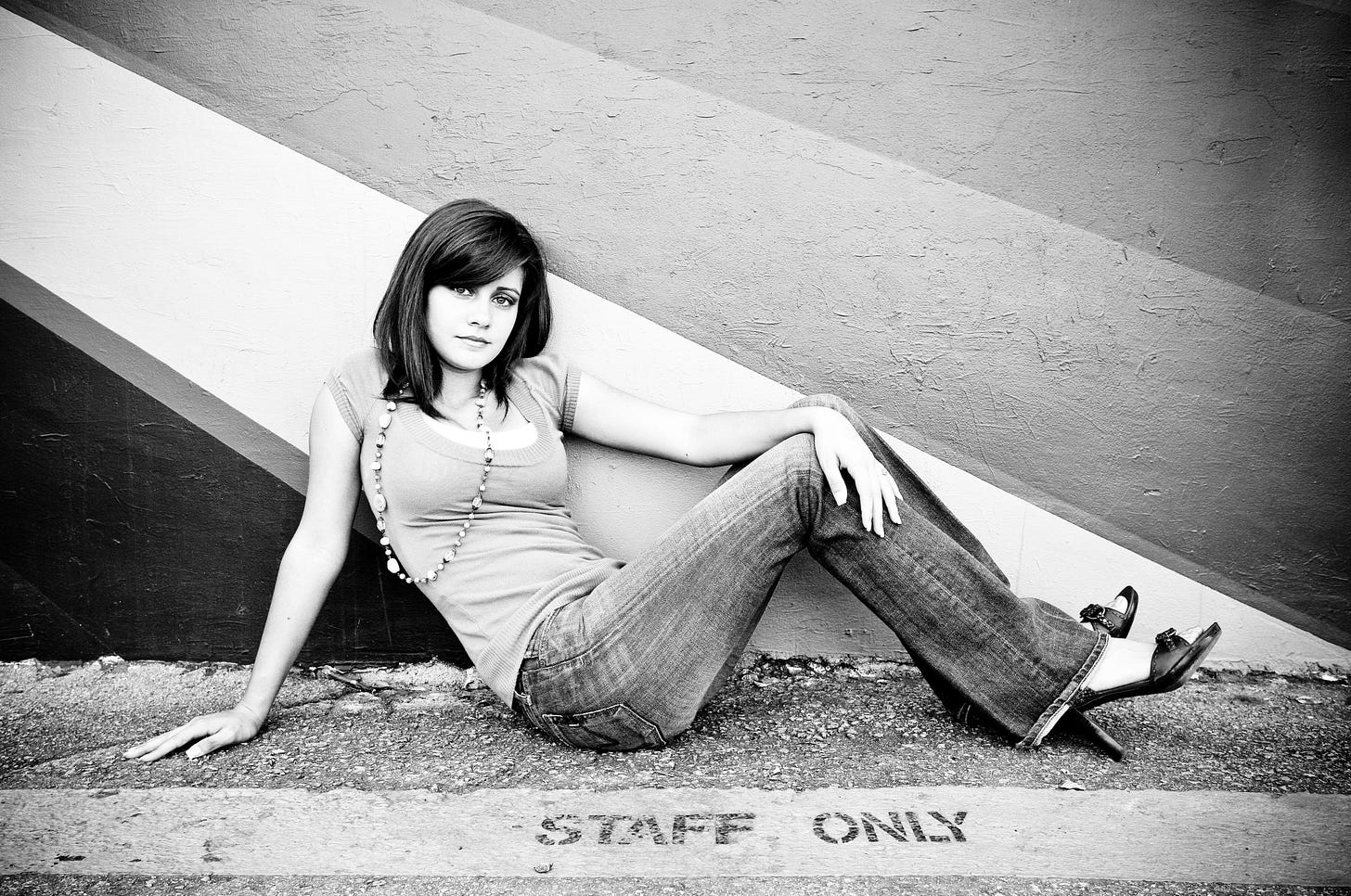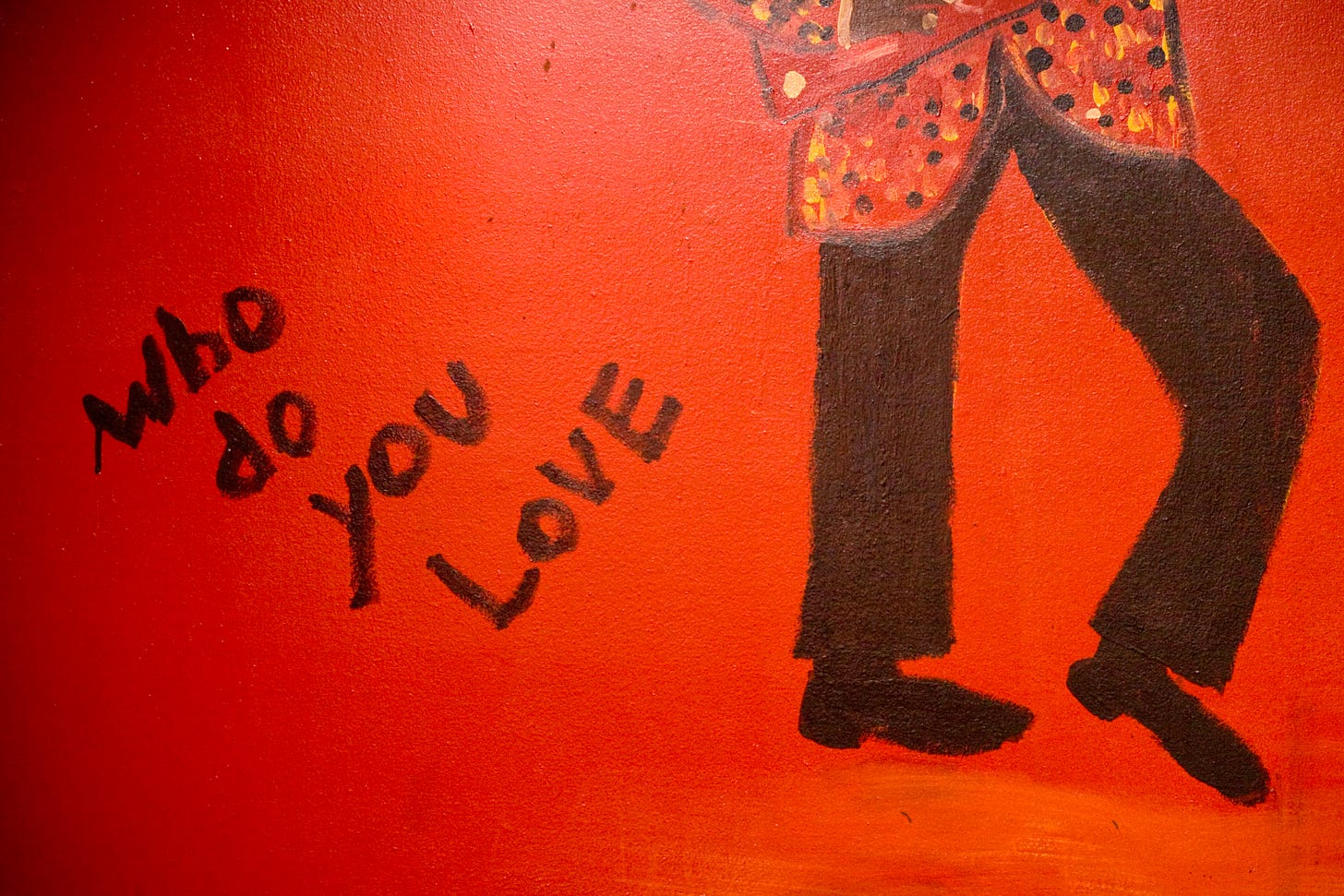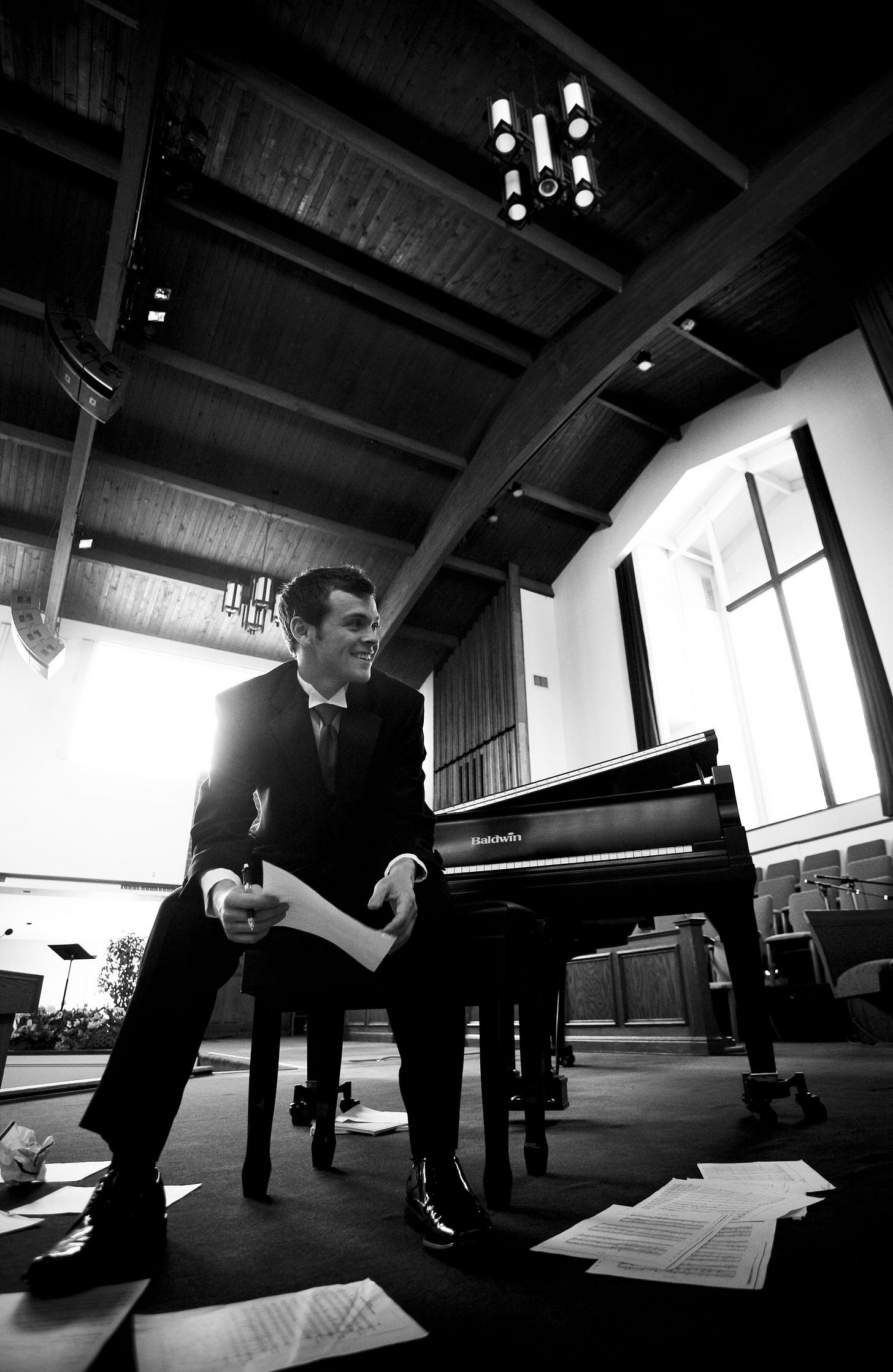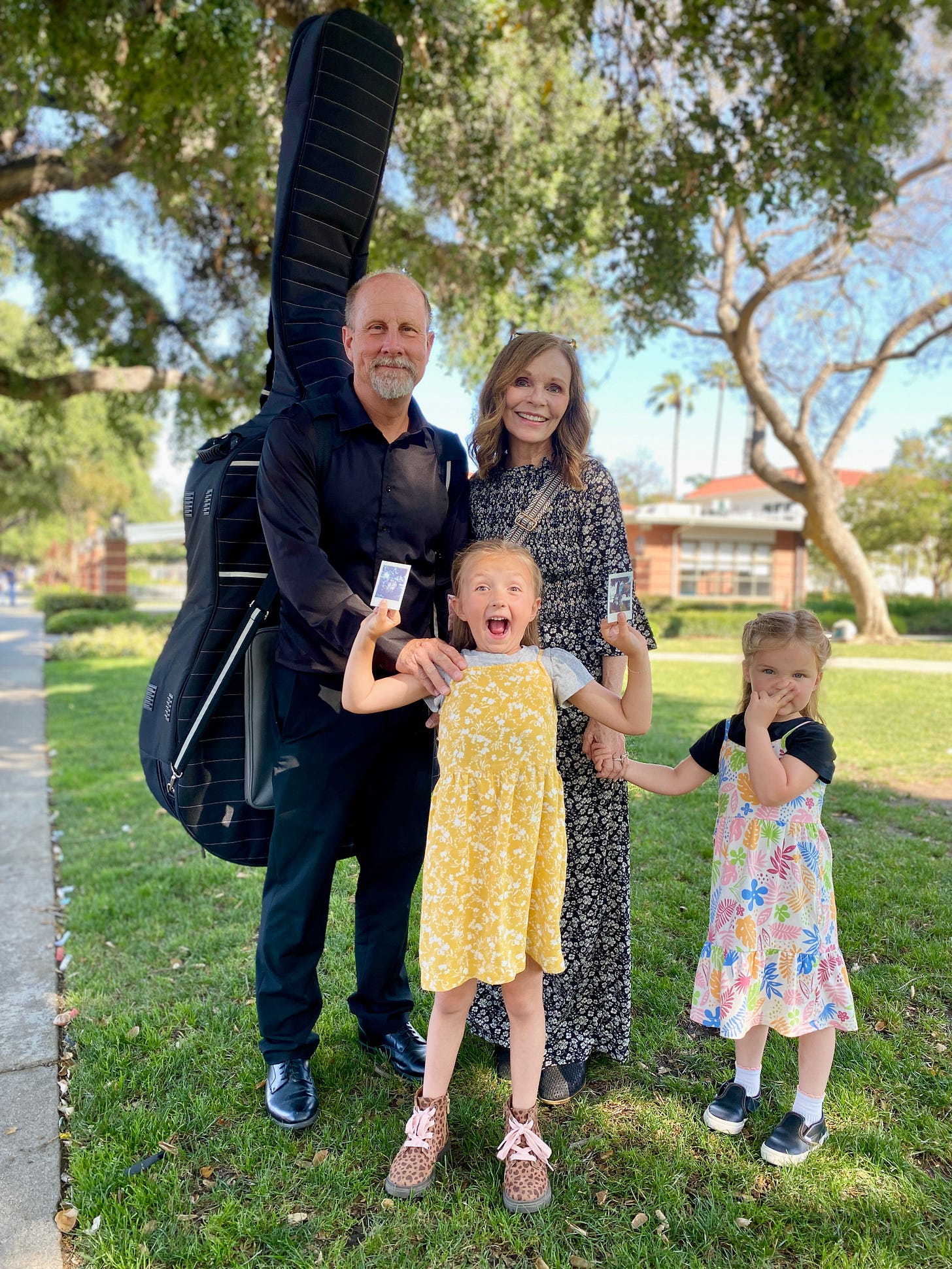< click "View entire message" if this is opened via your email box>
“Welcome to the real world
She said to me condescendingly
Take a seat, take your life
Plot it out in black and white” - John Mayer
He had me at “No Such Thing” | first song, first hit | Room for Squares | Aware Records
Played on alternative radio in June of 2001 and following September 11th, Columbia Records struck a deal with Aware and repackaged it, adding the song “3x5”, plus reworking the first four songs. The kids in these pictures were 10 to 12 years old during this time and Mayer’s music was anthem for many years. The title “Room for Squares” was taken from Hank Mobley’s “No Room for Squares” released while my family was literally immigrating over from England on a plane. Released on the Blue Note label., Blue Note being a long-time record label for unique “sub-culture” musicians and a favorite jazz venue in New York City we’ve attended several times.
No. There’s no room for squares.
In case I haven’t made it perfectly clear: Music and art are life.
One of the first places we explored in New York City was a subterranean “music and arts oasis,” aptly named “SubCulture.” 45 Bleecker Street in Greenwich Village was indeed a subculture culture.
Aren’t many of us trying to escape “culture,” diving deep into our own little sub cultures? artists, innovators, thinkers, running from the “culture of the day” hanging onto passionate community. Like here on Substack? Fighting the culture, the platform, the same train passing by taking everyone to the same place every day.
Your pencil clenched, looking up from lyrics drawn on experience, imagination, finding it’s the end of the line. You don’t recognize anything as the conductor calls “last stop?” Hanging onto those words, those friends who get you… caught up in the lyrics of your life, you decide you’re gonna get off that train.
“Immersed in color. Cradled in sound. Built for musical nirvana. We wanted to create the ultimate listening room, which put the focus on the artists and their craft, but also had a relaxed, downtown energy. The result is an intimate, underground space, bathed in evocative light, that conjures up more jewel box than black box - a home-away-from-home for those who love art in all its many facets.” - founders of SubCulture
Holding down a classical, composer oriented drive with a mix of new grass, jazz, and a dusty-lit intimate vibe, diverse audiences were treated to leading composers and musicians from New York’s classical and contemporary music world.
Beethoven-crazy aficionados would attend, like us tonight, at a Bach meets Bluegrass thing.
Sadly, SubCulture succumbed to 2020. Like many cool things, including all who laid it down on the small old stages of the theater. Performers, living in tiny apartments somewhere on the outskirts of Brooklyn, L.A., London, etc., with multiple roomies, and all who worked to make this special sub-culture happen, suddenly cast into a culture of madness.
Aren’t we always running counter cultural it seems?
There was once a Jesus Revolution that went against the culture of religion. I think it’s coming back. We need it.
I played a lot of John Mayer in our house during the days of working with high school seniors, many from 2005 to 2013. John Mayers lyrics from Room For Squares was on repeat. Then Heavier Things, “Daughters.” Look at these faces, I thought, during that time. That music. Those lyrics.
Onto Continuum, “Stop This Train,” Had a talk with my old man.. Said, "Help me understand," He said "Turn 68, oh, you'll re-negotiate." “Come on, stop this train I want to get off and go back home again.”
Bringing back his original blues influence Mayer had me reflecting about getting older. He seemed so part of the mainstream culture, but there was something uniquely special about him. His soulful guitar playing, accompanied by incredible musicians, a driving bass, meaningful timeless lyrics, “the tricky tightrope between pop accessibility and artistic credibility.”
Time To Move and Battle Studies came along and hummm bye bye Taylor. Mayer was behaving like a bad boy, spoke too much in interviews, did all the stuff to turn people off, flailed and in 2015 went Dead. Grateful Dead that is. Talk about sub-culture. “Dead and Company” was born, as he essentially stepped out of the spotlight, even before that in 2012 ,with a vocal cord issue.
Chris Willman with Entertainment Weekly said that Mayer was “more historically savvy, and more ambitious than you'd guess from the unforced earnestness of Room for Squares.”
Born in 1977, in Bridgeport, Connecticut, just one year before I graduated high school, I was surprised at how much I related to his music. How much it reminded me of my high school days. Things really don’t change. Culture just gets repackaged.
But then there’s subculture.
Take me home to my high school hallways. I’m getting older but staying inside the lines. No way. I loved nothing more than bringing out the individual qualities of the kids I raised and those I worked with on portrait shoots.
When John Mayer was 17, he was stricken with cardiac dysrhythmia and was hospitalized for a weekend. Reflecting, Mayer said, “That was the moment the songwriter in me was born,” penning his first lyrics the night he left the hospital. Shortly after, he began to suffer from panic attacks, which left him requiring lifelong medication.
The primary school Mayer watched Michael J. Fox's guitar performance as Marty McFly in Back to the Future and became fascinated. When he turned 13, his father rented him a guitar. A neighbor gave John a Stevie Ray Vaughan cassette, which introduced him to blues music. According to Mayer, he began a search that lead him to other blues guitarists, including greats like B.B. King, Freddie King, Albert King, Otis Rush, and Lightnin' Hopkins.
Never meant for Swiftie mainstream culture, he started taking lessons from a local guitar shop owner and became consumed. His obsession made his parents take him twice to see a psychiatrist, who confirmed Mayer was just fine!! They insisted he go to college, so after a few years, the Berklee dropout figured he was writing some good music and began to pursue live performance in local bars and venues with a band he formed.
John Mayer wanted to march to his own beat.
In the last few weeks I attended two season finales’ that my husband plucked and bowed his 100 year old double bass in. It was no coincidence that the pieces played resonated with my rebel spirit as of late.
Aram Ilyich Khachaturian was born in 1903 in the Russian Empire and lived to the age of 74, passing in Moscow. Crafted in 1946, just a year following the conclusion of World War II, Khachaturian’s “Cello Concerto in E-minor” endured a tumultuous fate, shrouded in the political turmoil of its time. Alongside luminaries like Shostakovich, Prokofiev, and Kabalevsky, Khachaturian faced accusations of “formalistic tendencies.” They were a subculture of passionate artists during a period of persecution threatening their lives and livelihoods if they wavered from the cultural propaganda. This artistic piece languished in neglect and for the first time, it was performed on a stage in California two weeks ago. I am always so impressed with the pieces conductor Dr. Sylvia Mann chooses. A true individual spirit with a passion for classical music and it’s history.
What made the Soviet power so mad about this concerto? They didn’t like the length or it’s fusion of jazz harmonies with folk-inspired melodies. It clashed with Moscow’s political elite and their beliefs.
During Stalin’s reign, jazz and Western music were banned, “viewed as breeding grounds for individualism and dissent.”
A masterful piece by Khachatuarian, a blessing to hear live, that was almost buried forever.
Last Saturday, I watched my oldest granddaughter absorbed in the second season finale’ with Papa on bass.
Once again, a piece written by one of the icons of classical music, Ludwig van Beethoven, born in 1770, we heard Overture to Egmont, a commissioned piece to compose incidental for the belated Vienna premiere of the play by Johann Wolfgang von Goethe (1754-1832). Heroism was close to Beethoven’s heart and a major concern for the, once again, repressive times. This was Goethe’s free interpretation of the titular Count Egmont’s 16th century struggle for Dutch liberty against the autocratic imperial rule of Spain. Egmont is imprisoned and sentenced to death, and when Klärchen, his mistress, fails to free him, she commits suicide. Before his own death, Egmont delivers a rousing speech and his execution becomes a victorious martyrdom in a fight against oppression. As I watched my near seven year old, fully entranced granddaughter, a powerful overture escapes out of a dramatic and slow introduction, soon transforming tragedy into triumph with a brilliant ending. I whispered in her ear, fists up, “run, be free! run, be free! She could feel it, smiled and did the same back at me. Beethoven himself would call it a Victory Symphony at the end of the play.
Fighting the general culture of what Substack is becoming, i.e., mainstream, algorithms, casting aside writers and artists that can’t stay on Substack 24/7 tap dance long enough to hold any attention plus a million several annoying technical glitches and silly artificial help…
“I wanna run through the halls of my high school
I wanna scream at the top of my lungs
I just found out there's no such thing as the real world
Just a lie you've got to rise above” - John Mayer | No Such Thing
Rise above…
Exhume your buried friends, keep going, take notes, write, play, draw, paint and poet your heart away while big names capitalize off of the few that rise to the top. But what is the top? I guess it’s Taylor and who would envy that? The top is no subculture.
No wonder so many artists suffer at the top. They lose themselves in the culture of what is expected of them for the general masses.
“It's hard to beat the system
When we're standing at a distance
So we keep waiting on (waiting)
Waiting on the world to change”
Guess I’ll keep.. waiting on the world to change..
The best of you is still hiding up your sleeve…
As a footnote, Mayer’s experience with health issues, alcohol issues, and cultural mainstream media exposure/issues probably lent to him an empathy we didn’t see.
Mayer created the Back to You Foundation and another one here too administered by Fairfield County's Community Foundation. He also has a huge heart for veterans after a 2008 surprise visit to Marine Corps base Camp Lejeune. He didn’t want them to know it was any kind of celebrity visit. He sat and talked to many vets suffering with PTSD and afterward began the Heart and Armor Foundation . John Mayer does tons of fundraising events for various causes as well and keeps it on the low-down.


















Just beautiful, Deb. Told and woven as only you can tell and weave, the moments and things that bring you inspiration and joy. And of course your beautiful photos throughout. Thank you for the wonderful post ❤️
You’ve outdone yourself again With this derailed history of sub-culture cool… music and singers and lyrics oh my! I love the way you research and weave it into your family life, your passion for music and the arts, the poetry songwriters give, a glimpse into life at each decade of our lives. You are so creative as you bring it all together in the youth and culture of today! Beautiful essay my sweetest frirnd, thanks for the music! 🎶🎵and the memories from the way back! Have an awesome getaway… somewhere fun to capture photos and a story to tell! 🥰💕🙌Well done! Cheers!